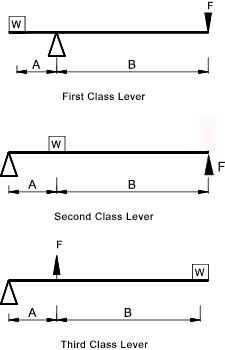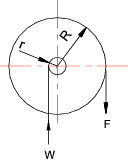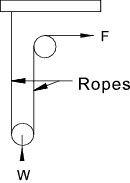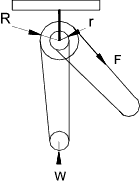| |
Mechanics Index
Simple Machines
|
Definitions Any mechanical or electrical device that transmits or modifies energy to perform
or assist in the performance of human tasks..
The Mechanical Advantage of a machine is the ratio of Force being moved W to the Effort F Mechanical Advantage = W /F The Velocity Ratio of a machine is the ratio of the distance moved by the Effort and the distance moved by the Force being overcome. Velocity Ratio = Distance moved by Effort/ Distance moved by force In the ideal frictionless/weightless machine Velocity Ratio = Mechanical Advantage The efficiency of a simple machine Efficiency = Work done by the machine / Work supplied to machine
The only parameter that can be determined from the machines dimensions is the
velocity ratio. F = a + b. W Incline Plane One of the simplest of machines is the inclined plane..
The force Force (F) is the effort required to move the Weight (W) up the slope. A movement of the weight a distance x along the incline will result in a vertical displacement of x Sin(θ)). Assuming that the incline is frictionless the F required to move the weight up the slope = W Sin(θ)). Velocity ratio = 1 /Sin(θ) Wedge
Velocity ratio (Single Wedge) = 1 /Tan(θ) Lever
Velocity Ratio (First Class Lever) = B /A Wheel and Axle
Velocity ratio = R / r Pulley
Screw
Velocity ratio = R. 2.p / p |
Links to Simple Machines
|
|
Mechanics Index






